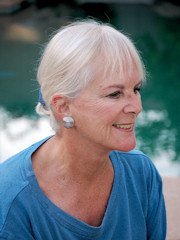
British born Mary-Rose Hayes is the author of nine novels, most recently WHAT SHE HAD TO DO, including the TIME/LIFE bestseller AMETHYST and two political thrillers co-authored with Senator Barbara Boxer.
Her books have been translated into sixteen languages and have regularly been chosen as Doubleday Book of the Month and Literary Guild main selections. She has published short stories and articles in England and the United States, and written and optioned several screenplays including a project for screen legend Lana Turner. She has worked as a script editor for Thames Television, London, Associate Editor for Pacific News Service, San Francisco, and as a free-lance book editor.
Mary-Rose has taught creative writing at the University of California, Berkeley, Extension; Arizona State University; and at numerous writers' conferences in the United States and internationally including twelve years with the Squaw Valley Community of Writers, California; the San Miguel Writers' Conference in San Miguel de Allende, Guanajuato, Mexico; and the Peralta Writers' Workshop, Tuscany, Italy, for which she was co-director for five years.
| |
Recently Completed
|




